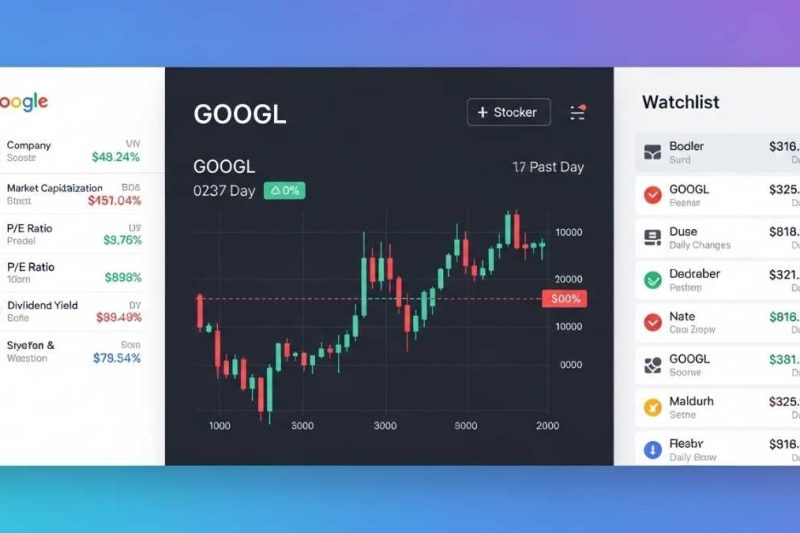Peer-to-peer (P2P) lending has emerged as a significant trend in the world of finance, providing an alternative to traditional banking systems. Whether you’re a borrower seeking more favorable loan terms or an investor looking for high returns, P2P lending platforms offer a unique opportunity for both parties. In this article, we’ll dive deep into the concept of P2P lending, its advantages, how it works, potential risks, and much more.
What is Peer-to-Peer Lending?
Peer-to-peer lending, also known as P2P lending or marketplace lending, is a method of borrowing and lending money directly between individuals, bypassing traditional financial institutions such as banks. Instead of relying on a bank to facilitate the loan, borrowers can connect with individual investors through online platforms, which handle the transactions and manage the loan agreements.
P2P lending platforms have gained significant popularity due to their ease of use, potential for better rates, and the chance to create a more personalized lending experience.
How Does Peer-to-Peer Lending Work?
The process of P2P lending is relatively straightforward and can be broken down into the following steps:
1. Registration on a Lending Platform
Borrowers and investors need to create accounts on a peer-to-peer lending platform. These platforms are usually accessible online and allow users to browse available loans or list their investment preferences.
2. Borrower Application
When a borrower applies for a loan, the platform assesses their creditworthiness through credit checks and other financial data, which helps determine their eligibility and the interest rate they will be offered. Some platforms also ask borrowers for the purpose of the loan, such as debt consolidation, home improvements, or business funding.
3. Loan Listing and Investor Investment
Once approved, the loan request is listed on the platform, where it becomes visible to potential investors. Investors can browse these listings and choose loans they wish to invest in based on criteria such as loan term, interest rate, and borrower risk.
4. Loan Funding
If an investor decides to invest in a loan, they contribute part of the loan amount. In most cases, loans are funded by multiple investors, with each contributing a portion of the total loan amount.
5. Loan Disbursement
Once the loan is fully funded, the borrower receives the loan amount, and the terms of the loan agreement are set. The borrower then repays the loan in installments over time.
6. Repayment and Investor Returns
As the borrower repays the loan, the payments are distributed to the investors in proportion to their contribution. Investors typically earn interest on the amount they’ve lent, making it a potentially profitable venture.

Benefits of Peer-to-Peer Lending
1. Better Interest Rates for Borrowers
Traditional banks often offer high-interest rates, especially for individuals with less-than-perfect credit. P2P lending platforms often provide more competitive rates by cutting out the middleman and connecting borrowers directly with individual investors. This is particularly advantageous for borrowers who may have been rejected by banks.
2. Higher Returns for Investors
For investors, P2P lending offers the potential for higher returns compared to traditional investment options like savings accounts or bonds. Depending on the loan risk, returns can vary, but many P2P platforms promise average returns of 5-10% annually.
3. Diversification of Investment Portfolio
Peer-to-peer lending allows investors to diversify their portfolios by adding a different type of asset—loans. By investing in multiple loans across different risk categories, investors can spread their risk and potentially boost their overall returns.
4. Convenience and Transparency
Both borrowers and investors benefit from the user-friendly interfaces of P2P lending platforms. With the click of a button, borrowers can apply for a loan, and investors can browse and invest in various loans. The platforms also provide transparency by offering detailed information on each loan’s risk, interest rates, and terms.
Risks Associated with Peer-to-Peer Lending
While P2P lending offers many benefits, it is not without risks. Understanding these risks is essential before diving into this investment or borrowing method.
1. Credit Risk
For investors, the biggest risk is the possibility that a borrower will default on their loan. While platforms usually perform thorough credit checks, there is no guarantee that borrowers will repay their loans in full. To mitigate this risk, platforms often offer risk ratings for loans, which can help investors assess the likelihood of repayment.
2. Platform Risk
The lending platform itself can also pose a risk. If a platform goes out of business or faces financial difficulties, it may be unable to facilitate loan repayments or even return investors’ funds. It’s important to choose a well-established platform with a strong track record of handling loans.
3. Liquidity Risk
Unlike stocks or bonds, peer-to-peer loans are not easily tradable. Investors must hold the loan until it matures, which means they may not be able to access their money quickly if they need it. This is a key consideration when deciding how much to invest in P2P loans.
4. Regulatory Risk
P2P lending is still a relatively new concept, and the regulatory landscape is evolving. Changes in laws or government regulations could impact the operation of lending platforms and the terms of loans. Potential changes could also affect the protections afforded to both borrowers and investors.
How to Get Started with Peer-to-Peer Lending
If you’re considering either borrowing or investing through a peer-to-peer lending platform, follow these steps:
1. Research Platforms
Start by researching and comparing various P2P lending platforms. Some popular ones include LendingClub, Prosper, and Funding Circle. Look for platforms with strong reputations, solid customer service, and a user-friendly experience.
2. Assess Your Risk Tolerance
If you’re an investor, it’s essential to assess your risk tolerance before making any investments. Platforms typically offer a range of loan types, from low-risk options with lower returns to higher-risk loans with the potential for greater returns.
3. Understand the Terms
Read all terms and conditions carefully. Ensure you understand the repayment schedule, interest rates, fees, and any penalties for early repayment (if you are a borrower). If you’re an investor, be aware of any fees the platform may charge, and understand how loan repayment works.
4. Start Small
For first-time investors or borrowers, it may be wise to start small. As an investor, you can spread your risk by investing in several smaller loans, rather than putting all your money into a single loan. As a borrower, consider starting with a smaller loan to get comfortable with the process before taking on more significant debt.
FAQs About Peer-to-Peer Lending
1. Is Peer-to-Peer Lending Safe?
While P2P lending carries some risk, it can be safe if you use a reputable platform and diversify your investments. Borrowers can also reduce their risk by having a solid repayment plan and a good credit history.
2. How Do I Choose the Right Platform?
Choose a platform that has a strong track record, clear fees, and good reviews from users. Look for platforms with strong customer service, transparent loan terms, and a wide range of loan options.
3. What Are the Returns for Investors?
Returns can vary, but most P2P platforms offer annual returns of around 5-10%. However, higher returns come with higher risk, so it’s essential to carefully assess each loan before investing.
4. Can I Invest in P2P Lending with Little Money?
Yes! Many platforms allow you to invest as little as $25 per loan. This makes P2P lending accessible for investors with limited capital.
5. How Are Peer-to-Peer Loans Repaid?
Loans are typically repaid in monthly installments. As a borrower, you’ll make payments directly to the platform, which will then distribute them to the investors based on their share of the loan.
Conclusion
Peer-to-peer lending has revolutionized the way people borrow and invest money. It offers a more flexible and potentially profitable alternative to traditional banking systems, benefiting both borrowers and investors. However, as with any financial decision, it is essential to carefully assess the risks and rewards before getting involved.
Whether you’re looking to borrow money at a lower interest rate or seeking to diversify your investment portfolio, P2P lending platforms can provide a valuable opportunity. Start small, research thoroughly, and you’ll be on your way to understanding and utilizing this innovative financial model.



